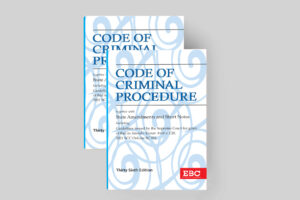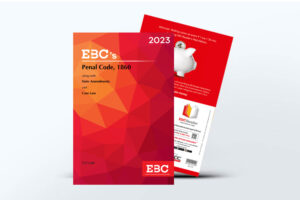Bombay High Court: This petition was initiated by the State under Section 366(1) of the Criminal Procedure Code, 1973 (‘CrPC’), seeking confirmation of death sentences awarded by the Special Court under the Maharashtra Control of Organised Crime Act, 1999 (‘MCOCA’) and the National Investigation Agency Act, 2008 (‘NIA Act’) vide judgment dated 30-9-2015 in connection with the 2006 Mumbai train blasts. The core issue was whether the conviction of the accused persons, including 5 who were awarded death sentences, for seven coordinated bomb blasts were legally sustainable considering alleged procedural lapses, unreliable testimonies of witnesses, doubts over the voluntariness of the confessions and inadequate corroborative evidence.
The Division Bench of Anil S. Kilor* and Shyam C. Chandak, JJ., while revisiting the judgment of the Special Court, set aside the convictions and sentences awarded to the accused persons and acquitted them holding that the prosecution failed to establish their offence beyond reasonable doubt.
Background and Legal Trajectory:
On 11-7-2006, between 18:23 p.m. and 18:29 p.m., seven high-intensity bomb blasts occurred almost simultaneously in the first-class compartments of the Mumbai local trains killing 187 people and injuring 824. A loss of approximately Rs 86 lakh was caused to Railways till the chargesheet was filed. The blast was aimed at peak hours when the trains were used by executives, professionals, and salaried employees. The bombs were strategically planted to ensure synchronized detonation, which suggested that timer devices were used. Separate FIRs were filed in seven police stations, but they were later consolidated for investigation by the Maharashtra Anti-Terrorism Squad (‘ATS’). Thirteen accused, along with fifteen absconding accused and two deceased (both Pakistani nationals), were charged under multiple provisions of the Penal Code, 1860 (‘IPC’), the Unlawful Activities (Prevention) Act, 1967 (‘UAPA’), the Explosive Substances Act, 1908, the Explosives Act, 1884, the MCOCA, the Railways Act, 1989, and the Prevention of Damage to Public Property Act, 1984.
The investigation revealed a deep-rooted conspiracy involving banned outfits, primarily, the Students Islamic Movement of India (‘SIMI’) and the Lashkar-e-Taiba (‘LeT’). The prosecution alleged that between 1999 and 2006, a network of conspirators planned and executed the attacks which included cross-border training in Pakistan, infiltration by Pakistani nationals via Nepal and Bangladesh border, local logistical support, assembling explosives in Mumbai and the coordinated bomb blasts to cause maximum damage to Mumbai, India’s financial capital and destabilise the social harmony.
The Special Court on 30-9-2015, convicted 12 out of 13 accused, sentencing five to death (Accused 1, 3, 4, 12 and 13) and the rest to imprisonment of varied terms. Accused 8 was acquitted which was not challenged by the State and Accused 1 died during the pendency of the confirmation case. The death penalties initiated the mandatory reference to this Court and the remaining accused filed criminal appeals challenging their convictions.
The defence raised several contentions questioning the legitimacy of the entire investigation and argued that the invocation of MCOCA was illegal as the pre-requirement of ‘continuing unlawful activity’ was not satisfied. The defence further raised doubts on confessional statements made under the MCOCA. It was contended that the accused were not informed of their right to legal counsel and no medical evaluations were done to rule out torture. The mandatory ‘cooling-off’ period was also either insufficient or ignored and there was absence of required certificates. Additionally, there were allegations of custodial torture, discrepancies in the testimonies and procedural infirmity in the test identification parades (‘TIPs’). The defence contended that most of the prosecution’s case was based on circumstantial evidence which lacked independent corroboration.
Court’s Analysis:
The Court undertook a detailed re-evaluation of the evidence which could be discussed under the following headings –
A. TIPs
A challenge was raised by the defence to the TIPs conducted on 07-11-2006 by the Special Executive Officer (‘SEO’) on the ground that on the date of TIP, he had no authority to act as the SEO and conduct the TIP. The Court examined the evidence and found that his appointment as SEO expired on 07-5-2005 and his fresh appointment was made on 15-11-2006, therefore, on the said date, he did not have the required authority and declared the TIP wherein Accused 1, 3, 12, and 13 were identified as inadmissible. But the Court relied on Budhsen v. State of U.P., (1970) 2 SCC 128, and held that the fact that the accused were also identified in dock identification could not be ignored.
B. Witness Testimony
The prosecution examined a total of eight eyewitnesses. The first category of witnesses (PW-63 and PW-77) were the taxi drivers who drove Accused 13 and 3, respectively, to Churchgate on the date of the incident, but they chose to remain silent and their statements were recorded under Section 161 CrPC only on 13-11-2006, i.e., after 116 days of sighting. PW-63 identified Accused 13 in Court on 17-1-2011 whereas PW-77 identified Accused 3 on 16-3-2011, but the TIPs were discarded as they were conducted by the SEO who had no authority. The dock identification of both the accused was done after more than a period of four and a half years. The Court held that it was highly unsafe to rely upon their evidence as neither of the witnesses could get sufficient opportunity to interact, to observe, and to store the face of the accused in memory.
The second category of witnesses (PW-57, 60, 62 and 74) were the passengers who saw the accused planting bombs in the trains. In the TIPs, PW-57, 60 and 62 identified Accused 1,13, and 3, respectively, but the TIPs were discarded as it was concluded that the SEO had no authority to conduct them. Except PW-60 who gave his statement on 14-7-2006, other witnesses gave their statements after 100 or more days, which meant they were silent for a long period. These witnesses identified the accused in the Court after more than four years, but the Court did not find any special reason for triggering their memory and recollecting the faces of the accused. As regards PW-60, who was quick to make his statement, the first arrest was made on 20-7-2006 and the arrests continued, but he was not called for the TIP for four months. Considering the above reasons, the Court observed that the evidence of these witnesses could not be made a basis for conviction. The Court also noted a delay of four months in conducting the TIP wherein PW-74 identified Accused 4 for which the Court held that his evidence could not be relied upon, on the ground that he appeared to be a stock witness who had acted as a panch witness in four crimes.
The third category of witnesses, PW-75, claimed that he saw Accused 2, 4, 6, and 7 assembling bombs in the house of Accused 6. He was silent for more than 100 days and did not disclose the said fact to the police but later in the cross-examination he changed his statement saying that he did not enter the house but his friend, who accompanied him, told him the said fact. The Court noted that he was also a witness in the Ghatkopar blast case and observed that his evidence was not worth relying on.
The fourth category of witnesses, PW-59, claimed to be a witness to the conspiracy but admitted that he did not know the subject they discussed in the meetings. Further, he stated the names of all the Pakistanis whom he met twice, but he failed to tell the name of a bar dancer with whom, as per his own version, he had a very close association for about one month. Thus, on these grounds the Court did not find this witness trustworthy.
There were other eyewitnesses like PW-85, who helped to draw two sketches of the suspects, but he was not called for a TIP. Some other witnesses who gave their statements within a short span and the description of the suspects, were neither called for a TIP nor examined as prosecution witnesses. This led the Court to draw an adverse inference for not examining the material witnesses.
C. Recoveries
The recoveries made were of RDX, granules, detonators, cooker, printed circuit boards, soldering gun, books, maps, etc. Out of these articles, the material and substantive evidence was of recovery of RDX, granules and detonators which were directly connected with the blasts. However, the Court observed that the evidentiary value of these recoveries did not attach any importance as the prosecution failed to establish and prove the proper custody and proper sealing, which ought to be intact until the articles were taken to FSL. The prosecution failed to establish the type of bombs used in the present crime. Thus, the Court held that the said recovery was not relevant.
D. Confessions
The Court held that the confessional statements were inadmissible on the following grounds:
- There was no relevant material available with the authority to reach a subjective satisfaction about the compliance of pre-requisites for the grant of prior approval for the invocation of MCOCA and such prior approval also suffered from non-application of mind. The two charge-sheets against Accused 13, which were relied upon for the grant of prior approval, did not satisfy the pre-requisites to constitute ‘continuing unlawful activity’.
- The authority that granted the prior approval did not enter the witness box to prove the contents of the letter of prior approval, and mere identification of his signature by PW-174 was not proof of the contents.
- There was variation in the correspondence made by the concerned DCPs, before or after recording the confession, in mentioning offences.
- The certificates, as mandated by Sub-Rule 6 of Rule 3 of the MCOC Rules, at the bottom of the confessional statements of Accused 1, 3, and 10 were absent or even where the certificate was there, it did not fulfill the requirements of Sub-Rule 6 of Rule 3 of the MCOC Rules and thus the prosecution failed to establish, by oral evidence of the concerned DCPs, the voluntariness of the confessional statements.
- The confessional statements were not found to be truthful and complete on various grounds, including some portions of them that were found to be similar and copied. Further, all the confessions were retracted by the accused.
- The accused succeeded in establishing the torture inflicted on them to extort confessional statements, etc. Further, they were not informed of their right to legal assistance before making their confessions and nor was a proper medical examination conducted to rule out torture or coercion.
- The mandatory ‘cooling off period’ for the accused to reflect and reconsider his decision to confess was either insufficient or completely disregarded.
-
There was procedural lapse in the oversight role of the Chief Metropolitan Magistrate in the process of recording confessions, particularly when he failed to directly question the accused about the voluntariness and ensuring that they understood their rights.
E. Circumstantial evidence
The prosecution’s reliance on circumstantial evidence, such as the call data records and the foreign travels to Pakistan, was found to be inconclusive in tying each accused to the crime beyond reasonable doubt. The Court held that mere possession of materials or proximity to events without a proven and direct role did not satisfy the threshold required for convictions, especially in the case of capital punishment. The Court opined that “punishing the actual perpetrator of a crime was a concrete and essential step towards curbing criminal activities, upholding the rule of law, and ensuring the safety and security of citizens” but also warned that convicting innocent people merely to close the case undermined the notion of justice.
F. Alternative Hypothesis
The Court referred to Sharad Birdhichand Sarda v. State of Maharashtra, (1984) 4 SCC 116, wherein the Supreme Court held that every possible hypothesis except the one to be proved should be excluded. In the present case, the Court thus, observed that the prosecution had not established the offence against the accused by bringing cogent evidence as proof to establish its case beyond reasonable doubt and thus held that there was no need to go into the issue of alternate hypothesis.
Decision:
The Court opined that creating a false appearance of having solved a case by presenting that the accused had been brought to justice gave a misleading sense of resolution. This deceptive closure undermined public trust and falsely reassured society, while in reality, the true threat remained at large. After considering the above analysis, the Court concluded that the prosecution utterly failed to establish the offence against the accused on each count and it was unsafe to reach the satisfaction that the accused had committed the offences for which they were convicted and sentenced.
Therefore, the Court quashed and set aside the impugned judgment and order of conviction and answered the present confirmation case in the negative and allowed all the criminal appeals. The Court directed the release of the accused from their respective jail upon executing a PR bond in the sum of Rs 25,000 each under Section 481 of the Bharatiya Nagarik Suraksha Sanhita, 2023 (‘BNSS’) for their appearance in case an appeal is preferred.
[State of Maharashtra v. Kamal Ahmed Mohd. Vakil Ansari, 2025 SCC OnLine Bom 2714, decided on 21-7-2025]
*Judgment authored by: Justice Anil S. Kilor
Advocates who appeared in this case:
For the Appellant: Raja Thakare, Senior Advocate, with A.M. Chimalkar, SPP, with Siddharth Jagushte, Akash Kavade, Aishwarya Sharma, Drushti Gala, Tushar C. Nirbhavane i/by M.M. Deshmukh, APP, G.P. Mulekar, APP, R.S. Tendulkar, APP, A.D. Kamkhedkar, APP, P.H. Gaikwad and A.R. Metkari, APP.
For the Respondents: Yug Mohit Chaudhari with Payoshi Roy, Hasan Nizami, Anush Shetty, Siddharth Sharma and Dashrath Gaikwad, Nitya Ramakrishnan, Senior Advocate, with Stuti Rai i/by Ansar Tamboli, Advocate, S. Nagamuthu, Senior Advocate, with Payoshi Roy, Siddhartha Sharma, S. Murlidhar, Senior Advocate, with Ninni Susan Thomas, Maitreya Subramaniam i/by Ansar Tamboli, Gaurav Bhawnani, Hetali Sheth, Khan Ishrat Azar Ali, Aditya Mehta.





